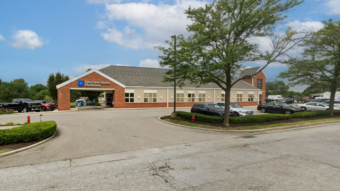The 4th annual Chicago Student Housing Real Estate Conference was held at the Gleacher Center on July 12, 2018. Industry professionals came out to hear what the latest trends are in college-town housing markets.
Stevhanie Howard, senior broker at Foresite Realty Partners, provided the welcome and introduction. Andrea Meltzer, CEO and co-founder, and Kim Rubenstein, co-founder and chief research and product officer, of Compatibilty, LLC, gave a presentation that touched on the experience of students behind the data that drives their opinion of housing properties.
Taylor Gunn, director of student housing at Axiometrics, a RealPage company, gave the keynote presentation. She provided a staggering number of metrics and statistics about student behavior, the performance of housing in relation to distance from campus and other factors.
One trend she discussed was the correlation between university enrollment and economic performance. When the markets go down, more people go back to school. The very strong U.S. economy of the past few years may plateau or decline, but it’s not expected to rise much more—meaning more enrollment and more student housing. “Going forward, we can expect demand to remain stable, if not pick up over the next couple of years,” she said.
Then the State of the Student Housing Real Estate Market panel took the stage. Lisa Skolnik senior vice president and chief content officer at Intralink Global moderated the discussion. Panelists included Will Baker, managing director at Walker & Dunlop; Robert Byron chairman and co-founder at Blue Vista Capital Management, LLC; Brittany Herringshaw head of student housing at Foresite Realty Partners, LLC; Craig Pryde, AIA, LEED AP principal at KTGY; Julie Skolnicki senior vice president, university partnerships at EdR and Brian Thompson executive vice president — investments at CA Ventures.
In terms of funding, an increase in foreign capital is driving down cap rates and pricing, forcing the sector to become more institutionalized, according to Thompson. Another way to support a new development or redevelopment is through a public-private partnership, a model that more and more is playing an important role on campuses around the country. “The trend for P3 is we’re not just putting up a building,” Skolnicki said. “We’re creating a community.”
Another area that the panel was sure to touch on was the recent amenity war that high-profile developments have been waging as they look to attract students. But not all student housing can support these luxuries, nor can they all pull in the rents that such amenities would demand. “We’re looking to provide the most efficient, functional living space,” Pryde said, “because cost is a challenge.” According to Pryde, services can be more important than amenities in many student housing developments, especially when located within a quarter- to half-mile from campus.



